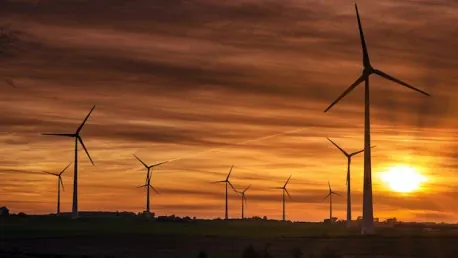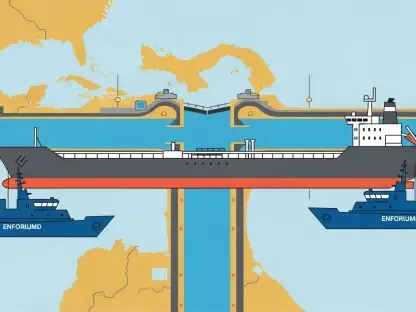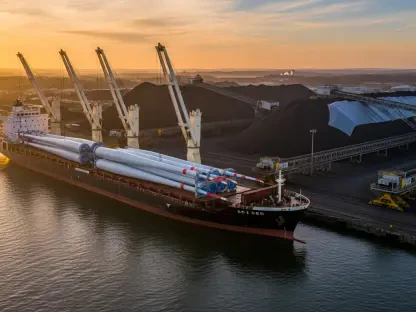The Trump Administration’s energy policies have led to a significant reduction in the growth of wind power in the United States over the past five years, as reported by energy consultancy Wood Mackenzie. The consultancy has updated its forecast for new wind capacity installations, reducing it to 45 gigawatts (GW), a drop of nearly 40% from the previously expected 75.8 GW. This sharp decline is primarily attributed to changes in U.S. energy policy and heightened economic uncertainty impacting the renewable energy sector.
Declining Wind Power Installations
Despite a stable short-term pipeline of wind power projects in the early years, the long-term outlook for the wind industry has become increasingly bleak. Wind power installations experienced a considerable drop in recent years, hitting a 10-year low. Just 5.2 GW was added to the grid, including 3.9 GW of new onshore builds, 1.3 GW of repowered onshore capacity, and a mere 101 megawatts (MW) of offshore capacity. This decline starkly contrasts the previous growth trajectory anticipated before the implementation of Trump-era policies. Although the industry saw signs of recovery in the short term, this rebound was primarily due to projects initiated under Biden’s administration rather than the result of favorable policies or economic conditions during Trump’s presidency.
The surge in Production Tax Credits (PTC) in 2022 led to a wave of new projects currently under construction, supporting short-term forecasts. However, post this period, policy uncertainties and economic pressures are likely to hinder the onset of new projects significantly. Developers are faced with the need to reevaluate their strategies and project economics, given the exclusion of wind power from the Trump Administration’s energy dominance agenda and the removal of areas within the Offshore Continental Shelf (OCS) from wind energy leasing. These policy shifts have created a challenging environment for future wind power development, stalling progress and dampening investor confidence in the sector.
Impacts of Policy Changes on Future Growth
Overall, the recent policy changes have posed significant setbacks for the U.S. wind power industry. The growth of wind power hinges on stable and supportive policies, and the withdrawal of such support under Trump has inevitably led to uncertainty and inefficiency within the sector. Developers are now under increased pressure to assess the viability of future projects in light of these challenges. The removal of substantial areas from wind energy leasing has notably impacted offshore wind development, one of the most promising areas for future renewable energy production.
The Trump Administration’s inclination toward fossil fuels and traditional energy sources has placed economic and development pressures on renewable energy projects, particularly wind power. As the market adjusts to these dynamics, developers and industry stakeholders will need to employ innovative strategies to navigate policy uncertainties. Investors, manufacturers, and energy companies must adapt to shifting funding and regulatory landscapes, aiming to secure long-term growth despite the hurdles created by recent political decisions.
The setbacks underscore the critical need for energy policies that provide clarity and continuity to support the wind power industry’s expansion. Moving forward, industry stakeholders must advocate for consistent regulatory frameworks and incentives that promote sustained growth and development. Despite these challenges, the resilience and adaptability of the wind power sector can be observed through ongoing projects and initiatives that seek to overcome the current economic and policy constraints.
Navigating the Future of Wind Energy
The Trump Administration’s energy policies have significantly stunted the growth of wind power in the United States over the past five years. According to a report by energy consultancy Wood Mackenzie, this shift in policy has led the consultancy to drastically revise its forecast for new wind capacity installations. Initially, the forecast was 75.8 gigawatts (GW), but it has now been reduced by nearly 40%, down to just 45 GW. This substantial decrease is mainly due to the changes in U.S. energy policies and an increase in economic uncertainty, which has considerably affected the renewable energy sector. These policy adjustments and the resulting uncertainty have made it more challenging for the wind power industry to meet its initial growth expectations. This scenario not only highlights the direct influence of political decisions on renewable energy but also underscores the economic factors that can either promote or hinder advancements in sustainable power sources in the United States.









